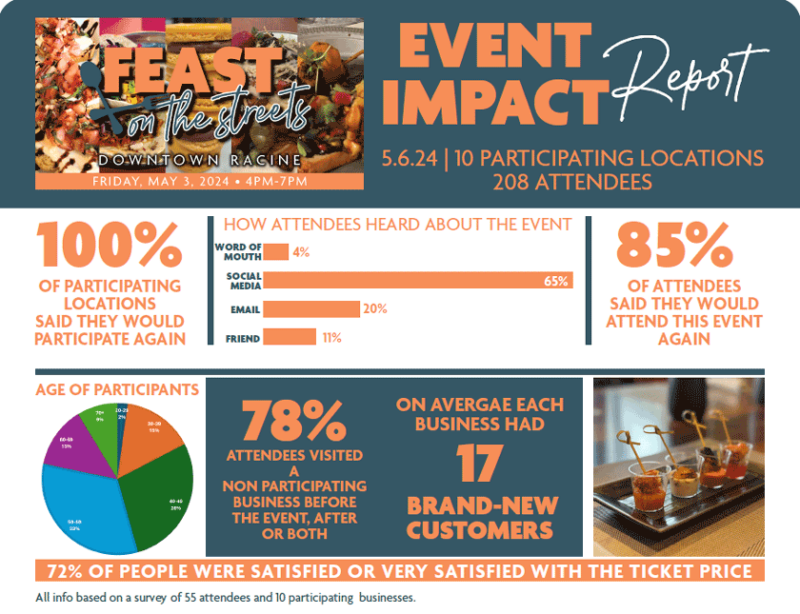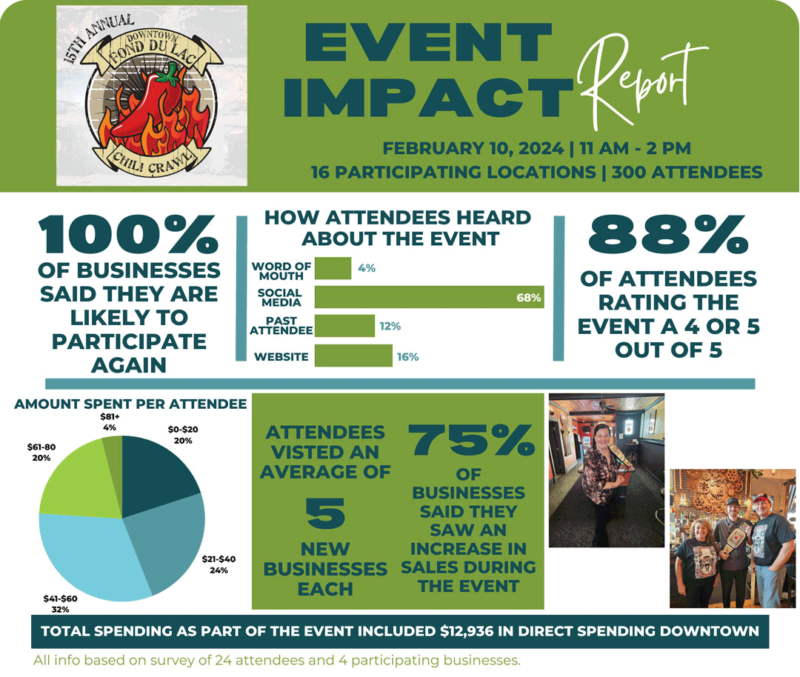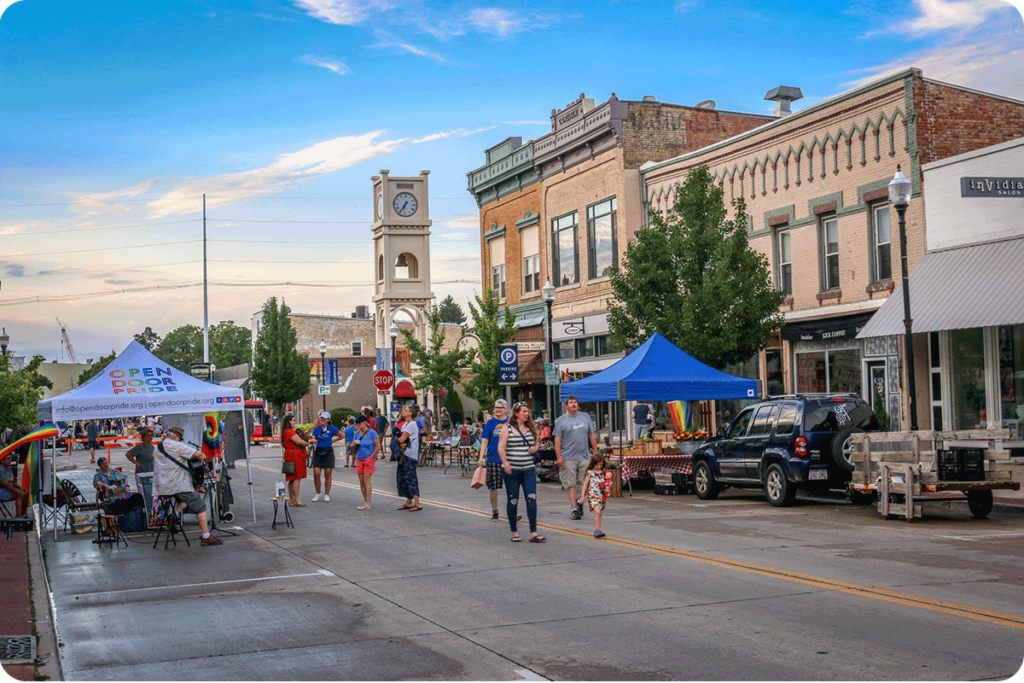
Sturgeon Bay
Whether you’re organizing a small community gathering or a major city festival, it’s essential to understand how to effectively evaluate the outcomes of an event. This article offers information on best practices for event evaluations and shares how they can help maximize the impact of every event you plan.
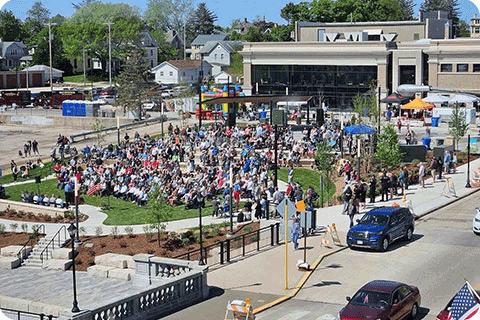
Watertown
The importance of event evaluation
Event evaluation is a systematic approach to examining events’ outcomes against their intended objectives. The process seeks to answer a fundamental question: “Did we achieve what we set out to do?” When done well, event evaluation goes beyond surface-level reactions to understand how an event connects with big-picture mission and goals. This requires setting quantifiable goals before the event, methodically collecting data during and after the event, and subsequently analyzing this data to draw meaningful conclusions that guide future decisions. While it takes time and effort to carry out an effective event evaluation process, it’s well worth doing. Benefits include:
- Continuous improvement: By reviewing and documenting successes and failures, you can incorporate what you learn to inform the next iteration.
- Accountability: Tracking measurable outcomes allows for transparency with sponsors, community leaders, and event participants.
- Increased attendee satisfaction: When you understand participants’ experiences and reactions, you can use this information to tailor future events to meet their needs and expectations.
- Strategic decision-making: The evaluation process yields data-driven insights that you can incorporate into your event strategy and long-term planning.
- Capture immediate feedback: A timely post-event survey enables reliable and detailed assessment of an event’s strengths and weaknesses.
- Quantify success metrics: By quantifying key success metrics like attendee satisfaction, spending behavior, and overall engagement, surveys provide useful data for reporting and future planning.
- Identify demographic patterns: Capturing information on the demographic makeup of attendees can guide your future marketing strategies and event design.
- Enhance community involvement: Surveys help respondents feel they have a role in the decision-making process, thus increasing their investment in your events’ success.
- Document trends over time: Consistent use of post-event surveys allows you to monitor trends and assess your organization’s progress on key event metrics.
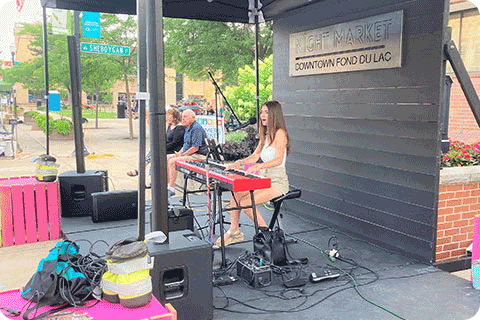
Fond du Lac
Key components of event evaluation
Effective event evaluation takes a multifaceted approach that scrutinizes all aspects of an event to assess successes and limitations and inform future decision-making. Key components of evaluation include:
- Performance assessment involves checking whether the event met its predefined objectives. Key performance indicators might include attendance numbers, revenue generated, and qualitative goals like participant satisfaction.
- Economic impact analysis explores how the event benefits the local economy through metrics like increased spending in local businesses, higher occupancy rates in hotels, and the overall economic impact for the area.
- Feedback gathering solicits feedback from participants, vendors, staff, and other stakeholders for insights into what elements of the event were successful and what elements need improvement.
- Stakeholder accountability assesses tangible results for those who invested in the event; sharing analyses in this area can help build trust to secure ongoing or increased support for future events.
- Strategic planning uses the information gathered to inform future event planning, ensuring that successful strategies are replicated and that less effective ones are revised or abandoned.
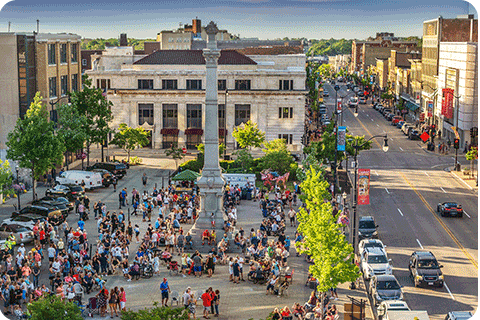
Racine
Effective data collection methods
Successful event evaluation requires quality data. This includes both qualitative data—such as observations, interviews, and open-ended survey responses—and quantitative data—such as attendance numbers, sales figures, and information about time spent on the event.
Many tools and technologies exist to facilitate both qualitative and quantitative data collection. For qualitative data, consider online survey platforms like SurveyMonkey or Google Forms. For qualitative data, consider using attendee counters (to verify who actually attended versus who registered, how many people attended individual event activities, etc.) or geofencing (which creates virtual boundaries around specific areas of your event, allowing you to track when attendees enter and leave each zone, producing insights that can help you manage crowd dynamics).
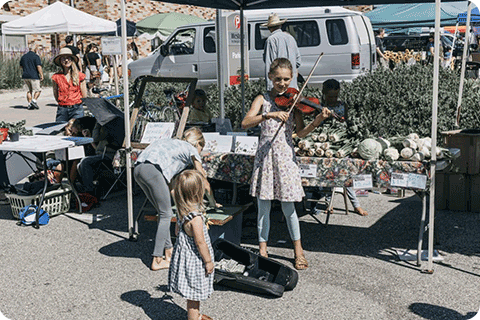
Viroqua
Tips and tricks for data collection
To ensure the data you collect is accurate and usable, keep three factors in mind: proper timing, volunteer training, and active engagement with attendees.
The timing of data collection is critical. Collecting data too early or too late can skew the results. It is best to capture feedback with a tool such as an electronic post event survey delivered when the event experience is fresh in respondents’ minds.
Be sure to provide volunteers with training on how to properly collect data. They should be familiar with the tools they are using and comfortable interacting with attendees to collect feedback or data.
Also be sure to let attendees know their feedback is valuable and that it will be used to enhance future events. In addition, incentives like a prize drawing for survey respondents can significantly increase response rates.
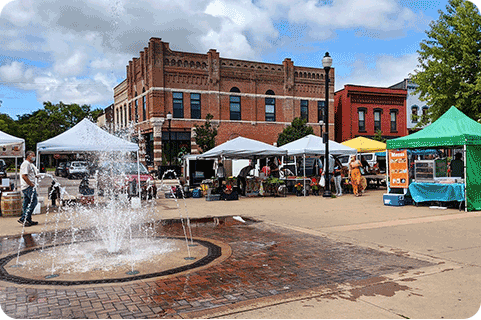
Stevens Point
Crafting an engaging report
Distilling the data you collect into an engaging and accessible event evaluation report is essential for persuading stakeholders to use the data to inform future decisions. By incorporating visual elements, highlighting key metrics, and providing actionable recommendations, you can create a report that will serve as a powerful tool to drive improvement. When developing your report, take care to:
- Incorporate visuals. Use charts, graphs, and infographics to make complex data accessible and engaging.
- Highlight key metrics. Include critical data on the success of the event, such as demographic information, financial stats, and feedback highlights.
- Provide actionable recommendations. Offer clear, actionable steps based on the data to help improve future events.
Once the report is complete, distribute it widely (e.g., via email, presentations at meetings, and posts on social media or event websites) to ensure that it reaches as many stakeholders as possible. Effective communication of findings is essential to the success of future events. By systematically reporting the outcomes and insights of the report to governing bodies and community partners, event organizers can secure future support and foster collaboration.
- Report to committee: Deliver detailed findings to organizing committees to guide the refinement of event strategies and operations.
- Report to board of directors: Present comprehensive reports to the board of directors highlighting successes, areas for improvement, and strategic recommendations.
- Report to city council: Submit formal reports to the local city council to demonstrate the event’s impact on the community and justify continued or increased support.
- Annual reporting: Compile and distribute annual reports that aggregate data from multiple events, providing a broad view of outcomes and trends over time.
- Sharing with peer communities: Exchange insights and strategies with similar communities to benchmark performance and innovate event practices collectively.
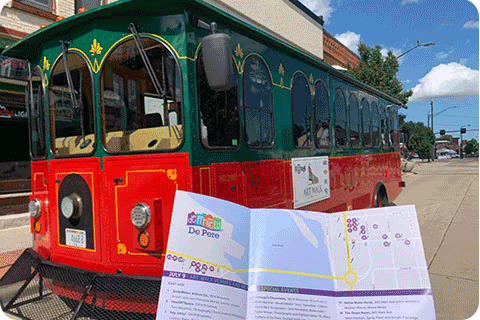
De Pere
Using data to drive decisions
Event planners can use the data collected and outlined in the report to refine their decision-making process by (1) optimizing internal planning and (2) promoting effective outreach.
Organizers can use data to make informed decisions related to internal planning, from financial structuring to organizational details. Here are some examples of how data can transform event management:
- Pricing: Use data on sponsorship contributions, vendor participation fees, and ticket sales to strategically set prices that maximize revenue while maintaining accessibility for attendees.
- Goal setting: Set specific, data-informed goals like increasing the number of participating businesses and vendors, boosting attendance figures, or expanding the event to include more dates.
- Event planning: Allocate marketing budgets based on data insights to target areas with the highest return on investment, thereby ensuring effective use of resources.
- Event execution: Address logistical issues from past events, such as parking confusion or inadequate signage, to improve the overall attendee experience.
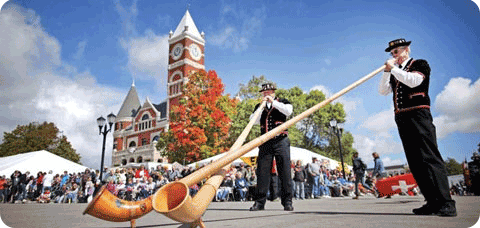
Monroe
Strategies for using data to improve outreach
Insights from data can also enhance outreach activities. From strategic planning to community engagement, all parts of an outreach strategy can benefit from effective use of data.
- Encouraging business participation: Use success metrics and demographic data to attract more businesses to take part in future events; highlight the benefits and opportunities they will receive by doing so.
- Informing sponsors: Provide detailed reports to sponsors that showcase the reach and impact of their investment in ways that encourage ongoing support.
- Developing grant requests: Enhance the likelihood of securing external funding by using data to substantiate the community benefit of events in your grant applications.
- Thanking volunteers and committee members: Use specific data to highlight the contributions of volunteers and committee members, adding detail and depth to your appreciation efforts.
- Strategic planning: Integrate data into organizational planning processes to refine goals, improve resource allocation, and strategize future initiatives.
- Educating new businesses: Share data with new area businesses to demonstrate the potential benefits of community engagement in the form of event participation.
With thorough and thoughtful event evaluation, organizers can transform events into powerful learning experiences that continually evolve and improve. Detailed evaluation practices that gather comprehensive data, synthesize the data into applicable insights, and share these insights widely can help you create memorable, impactful, and sustainable experiences that resonate with participants and the entire community.
Case Study: Feast on the Street (Racine)
Downtown Racine held its first Feast on the Street event over three hours on Friday, May 3, 2024. Tickets were sold at $40 each and included 10 culinary tastings from restaurants located in the heart of downtown Racine.
With this first offering, the organizers sold out 200 first-come, first-served tickets at the $40 price point, reaching total sales of 208 tickets. As a follow-up to the event, 46 attendees and 7 businesses provided additional data and feedback.
From evaluating the process, Downtown Racine has learned several valuable insights that will inform their future events. One significant change is that they decided to schedule future occurrences of this event on dates when no other events are occurring, rather than concurrently with First Fridays. Interestingly, attendees expressed a preference for Friday evening events, which differs from the usual practice of holding ticked events on Saturdays.
Based on feedback, Downtown Racine also decided to extend the event duration by one hour to allow participants more time to visit all locations. Additionally, attendees felt that the ticket price was appropriate, so the current price will be maintained.
These evaluations and insights were presented to the executive board, guiding Downtown Racine’s decisions and improvements for the Fall event. Evaluating this event has significantly enhanced the communication with board and committee members, ensuring that Downtown Racine is responsive to attendee feedback and continuously improving their events.
Case Study: Downtown Fond du Lac Chili Crawl
The Downtown Fond du Lac Partnership held its 15th annual Chili Crawl event over three hours on Saturday, Feb. 10, 2024. Participants paid a $10 entry fee to taste 16 unique chili recipes prepared by downtown restaurants as well as individual local residents—casting votes for the Best Restaurant Chili and the Best Home-Cooked Chili.
This year, 300 first-come, first-served tickets were available for $10 each; the allotment sold out despite exceeding previous years’ number of available tickets by 100. The Best Restaurant Chili award went to Brick House for the third year in a row; the Best Home-Cooked Chili award went to Main Pub, which beat out the previous winner, Korneli’s Bar, by two votes. The event included a prize drawing for participants who turned in their votes/map by 2 p.m., with two winners each receiving a $50 Downtown Fond du Lac gift certificates.
The goal for all of Downtown Fond du Lac Partnership’s events is to raise the public awareness of the downtown businesses. In the case of the Chili Crawl there were 13 participating businesses and on average, attendees visited 5 new businesses that they were previously not familiar with, and plan to return to 8 businesses for later shopping. While direct spending for this event was calculated at $13,936, the impact is far greater due to repeat visits from attendees dure to their newfound awareness of the downtown businesses.

